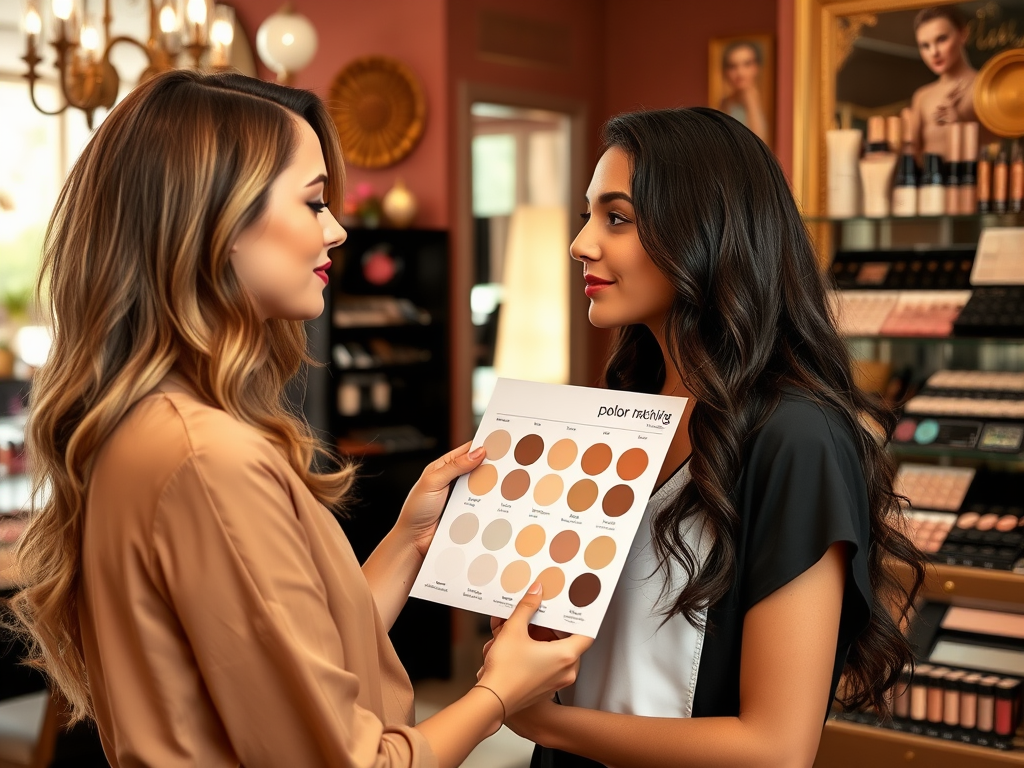Choosing the right foundation shade is more than just a task; it’s a journey toward achieving your perfect makeup look. The vast array of foundation options available today can be overwhelming, leaving many feeling lost in a sea of colors and formulations. Yet, understanding how to find your ideal shade can boost your confidence and enhance your natural beauty. This guide dives into the essential tips to navigate this intricate world of beauty, empowering you to make informed choices tailored to your unique skin tone. With knowledge about undertones, swatching techniques, and the right brands at your disposal, you will be equipped to discover a foundation that feels like it was made just for you. Now, let’s embark on this adventure to identify that perfect shade.
Understanding Foundation Shades

Choosing the right foundation shade can significantly impact your overall makeup look. The right foundation blends seamlessly into your skin tone, providing a flawless finish that enhances your natural beauty. With so many brands and formulations available, it’s essential to grasp the basics of foundation shades to make an informed decision. A well-selected foundation can act as a canvas, allowing other makeup elements to shine. On the other hand, a mismatched shade can lead to an uneven complexion, making your makeup appear displeasing. Therefore, let’s explore how to pinpoint your perfect foundation shade.
Identifying Your Undertone

Understanding your skin’s undertone is pivotal in selecting a foundation that best complements your complexion. Undertones can be categorized into three main types: cool, warm, and neutral. Knowing where you categorize will significantly simplify your search. Cool undertones usually have pink, red, or blue hues, which can be beautifully highlighted with foundations that carry similar tones. Warm undertones, on the other hand, often feature yellow, peach, or golden hues, and tend to look best with foundations that emphasize those warmths. Neutral undertones balance between the two, allowing for a broader range of options.
- Cool: Pink, red, or blue undertones.
- Warm: Yellow, peach, or golden undertones.
- Neutral: A mix that leans towards neither warm nor cool.
Determining your undertone can be achieved through simple yet effective methods. One popular method is the vein test, where you examine the veins on your wrist. If they appear blue, you’re likely to have cool undertones, while green veins indicate warm undertones. Another method is the jewelry test. By trying on both silver and gold jewelry, you can see which one enhances your complexion better. Cool undertones usually look great in silver, while warm tones are often flattered by gold. Lastly, the white paper test involves holding a piece of white paper next to your face. If your skin appears more yellow, you’re warm-toned; if it looks more pink, you’re cool-toned. Each of these methods provides insight, helping you to narrow down your choices effectively.
Swatching the Foundation
Once you’ve identified your undertone, it’s time to swatch foundations to find the perfect match. It’s crucial to swatch in natural light, as artificial lighting can distort true color. When trying on shades, apply them directly on your jawline; this area helps you determine how well the shade blends with both your face and neck. After application, resist the urge to make an immediate judgment. Instead, allow the foundation to settle for a few minutes. This waiting period enables you to see how it interacts with your skin’s natural oils and helps you determine if the shade oxidizes or changes color. This method ensures that you choose a foundation that looks just as good in real life as it does in the bottle.
| Brand | Shade Range | Finish |
|---|---|---|
| Fenty Beauty | 50 Shades | Matte |
| MAC Cosmetics | 120 Shades | Natural |
| Maybelline | 40 Shades | Dewy |
| NARS | 50 Shades | Satin |
| L’Oréal | 30 Shades | Matte |
Consideration for Skin Type and Finish
When searching for the perfect foundation, it’s not only about the shade. You also need to consider your skin type and the finish you desire. Oily skin types typically benefit from matte or oil-free formulations, which help control shine and provide a smooth appearance. Conversely, if your skin is dry, you may want to opt for foundations with hydrating or dewy finishes. These types often contain moisturizing ingredients that can help prevent your makeup from cracking or looking flaky. Sensitive skin requires particular care, as it’s essential to choose products that are fragrance-free and hypoallergenic. By matching both the shade and formula to your unique skin type, you’re more likely to achieve that perfect, effortless look.
Lastly, many beauty retailers recognize the importance of helping customers find their perfect foundation. Many offer testers or samples, allowing you to experiment with colors before making a purchase. In particular, retailers often have generous return policies for cosmetics, enabling you to return products if they don’t meet your expectations. This trial-and-error approach can be invaluable in ensuring you find the right match, minimizing the risk associated with purchasing expensive foundations. Taking advantage of these policies can help you avoid commitment to shades that ultimately fall flat.
Conclusion
Finding your ideal foundation shade requires a clear understanding of your skin’s undertone, the right application techniques, and knowledge about the brands suited for your needs. Armed with these essential tips, you can confidently navigate different options to uncover a foundation that elevates your look. Remember, the journey doesn’t end with finding a shade; it’s about embracing the unique beauty that exists within you. It’s a celebration of individuality, where the right foundation acts like a canvas to your artistic expression. Whether you’re getting ready for a special event or simply to feel your best, the right foundation can change your entire makeup experience.
Frequently Asked Questions
- What’s the difference between foundation shades and undertones? Foundation shades refer to the visible color of the product, while undertones are the subtle hue beneath that color.
- Can my foundation shade change with the seasons? Yes! Your skin tone can change with sun exposure and factors like hydration, so it’s good to reassess your shade seasonally.
- Is it better to choose a lighter or darker shade? Always choose a foundation that matches your natural skin tone as closely as possible. A shade too light can make you appear washed out, and a shade too dark can create an unnatural contrast.
- How do I store my foundation to prolong its shelf life? Keep foundation in a cool, dry place away from direct sunlight and regular temperature changes to maintain its integrity.
